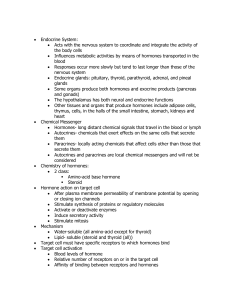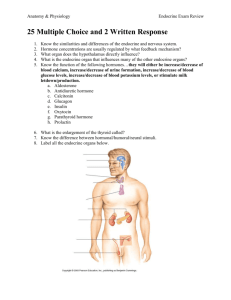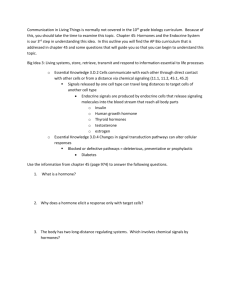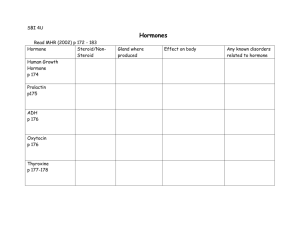Anatomy & Physiology Midterm 2 Study Guide
advertisement
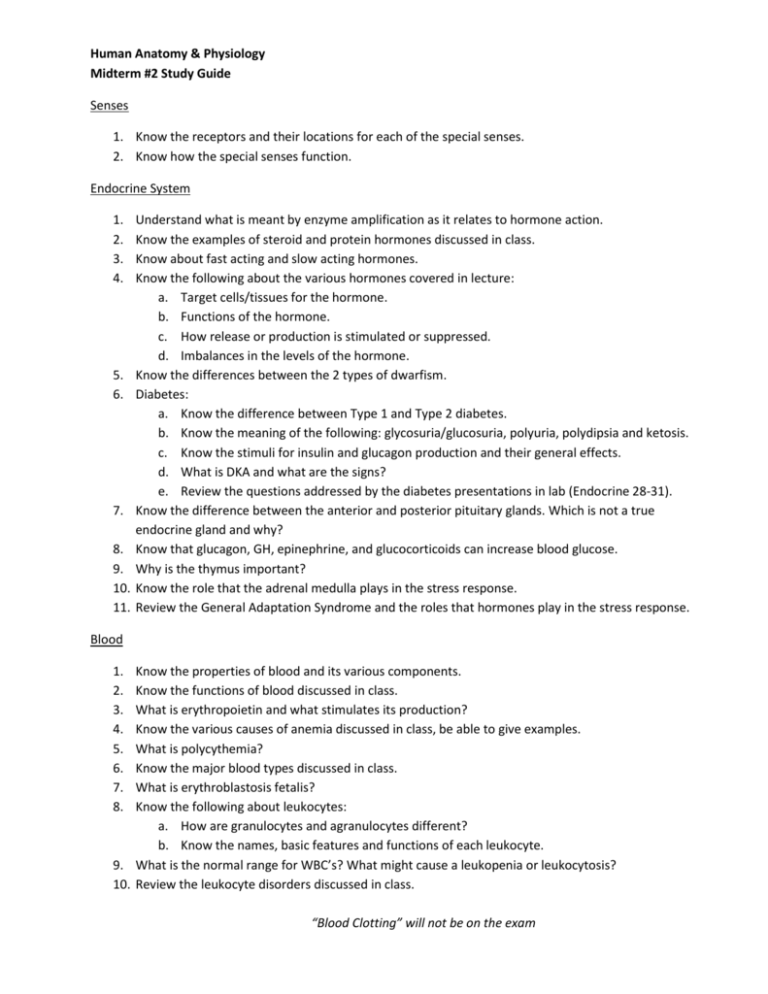
Human Anatomy & Physiology Midterm #2 Study Guide Senses 1. Know the receptors and their locations for each of the special senses. 2. Know how the special senses function. Endocrine System 1. 2. 3. 4. 5. 6. 7. 8. 9. 10. 11. Understand what is meant by enzyme amplification as it relates to hormone action. Know the examples of steroid and protein hormones discussed in class. Know about fast acting and slow acting hormones. Know the following about the various hormones covered in lecture: a. Target cells/tissues for the hormone. b. Functions of the hormone. c. How release or production is stimulated or suppressed. d. Imbalances in the levels of the hormone. Know the differences between the 2 types of dwarfism. Diabetes: a. Know the difference between Type 1 and Type 2 diabetes. b. Know the meaning of the following: glycosuria/glucosuria, polyuria, polydipsia and ketosis. c. Know the stimuli for insulin and glucagon production and their general effects. d. What is DKA and what are the signs? e. Review the questions addressed by the diabetes presentations in lab (Endocrine 28-31). Know the difference between the anterior and posterior pituitary glands. Which is not a true endocrine gland and why? Know that glucagon, GH, epinephrine, and glucocorticoids can increase blood glucose. Why is the thymus important? Know the role that the adrenal medulla plays in the stress response. Review the General Adaptation Syndrome and the roles that hormones play in the stress response. Blood 1. 2. 3. 4. 5. 6. 7. 8. Know the properties of blood and its various components. Know the functions of blood discussed in class. What is erythropoietin and what stimulates its production? Know the various causes of anemia discussed in class, be able to give examples. What is polycythemia? Know the major blood types discussed in class. What is erythroblastosis fetalis? Know the following about leukocytes: a. How are granulocytes and agranulocytes different? b. Know the names, basic features and functions of each leukocyte. 9. What is the normal range for WBC’s? What might cause a leukopenia or leukocytosis? 10. Review the leukocyte disorders discussed in class. “Blood Clotting” will not be on the exam






